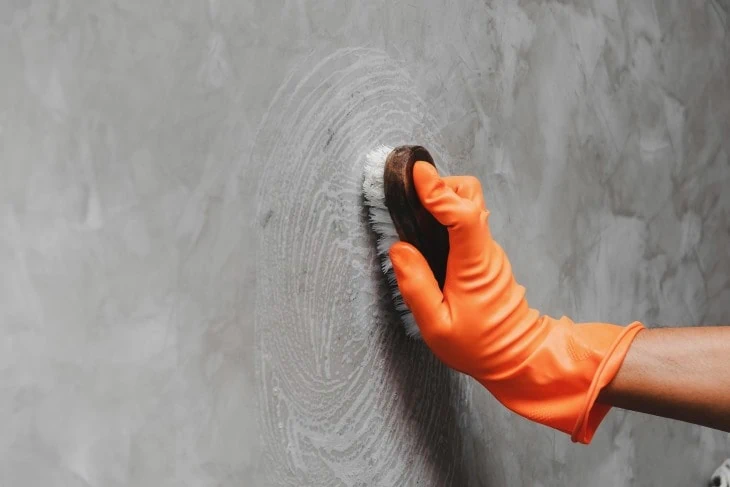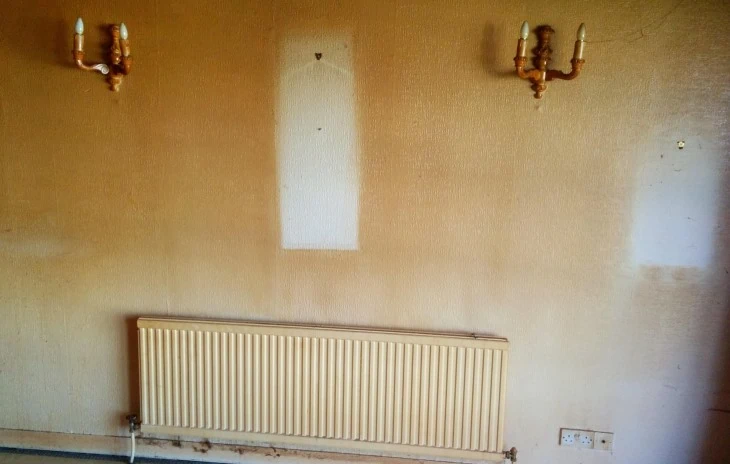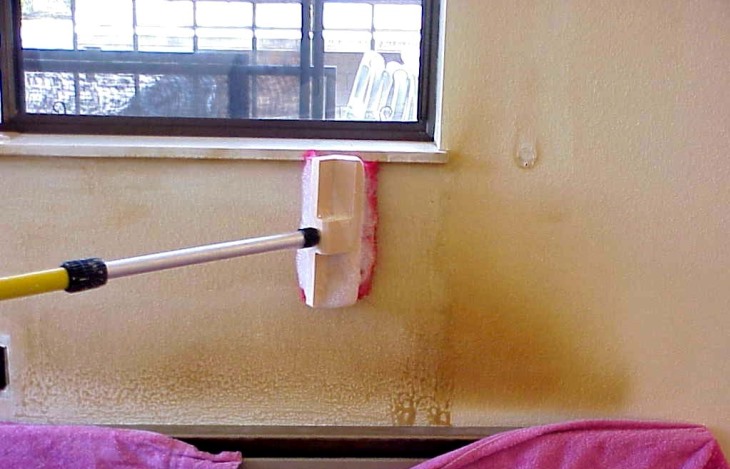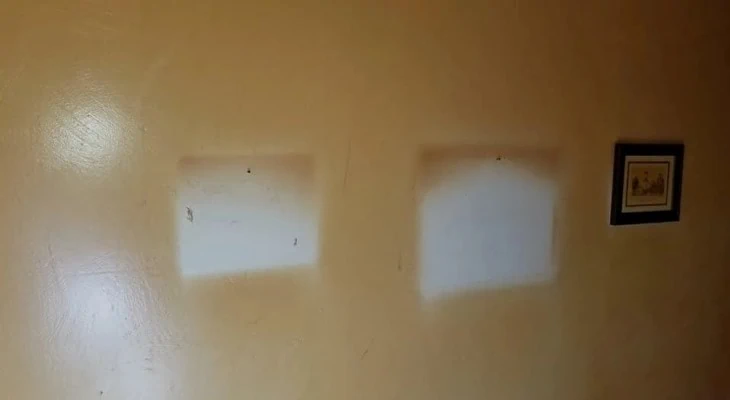There could be multiple reasons why your walls may be smoked stained. If you (or a previous occupant) smoked cigarettes inside your home for years, the tar from nicotine would leave a yellowish-brown residue on your walls.
Or perhaps you had a small kitchen fire that turned your backsplash black. Underneath this layer of soot, there will be a similar yellow stain, and it could be especially difficult to remove if your walls are painted instead of tiled.
Fear not! Because if you act quickly and use a little elbow grease, it’s actually rather easy to remove these stains with simple and cheap household cleaners.
NOTE: If you’ve had a substantial fire, you might want to contact a professional before attempting to do it yourself. Soot from a fire can cause damage to airways if there is enough of it.
Table of Contents
How to Clean Fire Smoke Off Walls

You can remove fire smoke stains with items you probably already have on hand. You will need:
- A vacuum with a hose
- Several clean rags
- Ammonia or white vinegar
- A bucket
- A scrub brush
- A chemical sponge (like Clean) for plaster walls only
Pre-clean
Use the vacuum hose to suck up any loose soot, and then wipe the rest away with a dry cloth. It should come off fairly easily. You may want to wear gloves to avoid getting it on your hands.
After you’ve gotten the top layer off, you can go back over the area with a wet rag. Continue to wipe and rinse until almost all of the black soot is gone.
Scrub
Mix a 50/50 solution of vinegar and water OR ammonia and water in the bucket. DO NOT MIX CLEANING CHEMICALS TOGETHER. Use either the scrub brush or another clean rag and begin scrubbing the affected area with a moderate amount of force.
Note: for plaster walls, don’t use water but instead use a chemical sponge like this that is slightly damp. Placing too much water on plaster will cause the soot and debris to soak further into the wall.
This step takes some time and repeated passes over the area, but you will gradually see the stain start to fade.
Rinse
When you’re satisfied that the stain has been thoroughly removed, you need to remove any cleaning residue from the walls. Empty your bucket and refill it with clean water only.
Go back over the area with a new, clean rag and water only. Tip: If you use a white rag, you will be able to get a better idea of whether or not there is still smoke residue left on the wall since this can be hard to see, especially if your paint is a darker color.
Dry & Assess
Let the area air dry completely for a few hours, and then check it from all angles to make sure all the smoke damage is gone. Repeat the cleaning process above if you need to.
In some instances, you may need to do a thin layer of touch-up paint. This would be more likely if you used a chemical sponge like Mr. Clean, as they are known to remove layers of paint, especially with repeated passes over one area.
How to Remove Cigarette Smoke Damage on Walls

The process of removing cigarette residue is similar to removing fire smoke residue, except with the addition of a chemical called Trisodium Phosphate or TSP.
It’s recommended that you buy the powder form of TSP as opposed to the liquid form. You can find it online or in most home improvement stores near the other heavy-duty cleaners.
Trisodium phosphate is a top choice for removing cigarette stains because it also neutralizes and eliminates the odors associated with it.
Gather your supplies first. You will need:
- A bucket
- A scrub brush or sponge
- Clean rags
- Gloves
- Dish soap
- TSP OR vinegar
- Spray bottle (optional)
Pre-Clean

Just as with removing fire smoke stains, you want to remove as much superficial residue as you can. Using regular dish soap and water, use a rag to moderately rub the entire surface of the stain.
Go back over the area again with a new, clean rag that only has water on it to remove any leftover dish soap.
Scrub
If you can’t get your hands on some TSP (or you personally opt not to use phosphate cleaners), mix a 50/50 solution of vinegar and water in a spray bottle. Spray the area thoroughly and scrub it with the scrub brush.
You may want to have some extra clean water on hand to rinse the wall as you go so you can get a better look at your progress. Vinegar is another great odor eliminator that will work in lieu of TSP to help remove the smoke smell.
If you’re using TSP, mix the powder in a bucket of warm water (check the label for precise measuring instructions). You want the powder to be completely dissolved before you use it, and you will want to wear gloves as TSP can cause skin irritation.
Using a scrub brush or a sponge, scrub the area. TSP will work rather quickly and can strip paint if you use too much powder in the solution or you scrub too hard, so take care when using this method.
Rinse Thoroughly
The smell of vinegar is known to be fairly strong and will linger if it’s not rinsed off thoroughly. TSP absolutely must be rinsed off (with gloves still on), or it will begin to eat into the paint and could also cause a reaction with any other cleaning chemicals you use.
For TSP, it’s best if you give it a double rinse to be extra sure that all of it is removed from the wall.
Although it might sound like a rather scary chemical, TSP is not an issue if you use it as directed and take precautions to protect your skin.
Dry & Assess
Give your wall a few hours to air dry before you repeat the above cleaning process. The water from the rags and sponges could slightly alter your paint color and won’t be an accurate representation of whether or not it’s clean.
You don’t want to double up on chemicals if you don’t need to.

